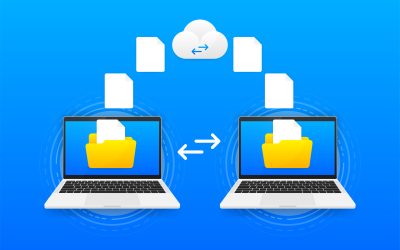With amazing advancements in technology, there has been a significant change in all industries and their business processes. Technology is transforming the way industries are serving their customers and markets in which they compete. Efficient data collection and management is vital to improve business processes and companies look forward to automate their data processing with the support of professional data entry services. Artificial Intelligence, machine learning and Robotic Process Automation (RPA) are being increasingly implemented to improve efficiency and productivity. New technologies like RPA help minimize the burden of spending hours in front of the computer entering data manually.

Robotic Automation Process to Improve Efficiency of Employees
According to Leslie Willcocks, professor of technology, work, and globalization at the London School of Economics’ department of management, “RPA takes the robot out of the human.” It can take away the dull and tedious repetitive, routine tasks from the average knowledge worker employed on a back-office process. It can do such repetitive stuff more quickly, tirelessly, and accurately than humans and with this technology employees can be freed up to perform other tasks that need human capabilities such as reasoning, judgment, customer interaction and emotional intelligence.
With RPA, workers can easily gather data and analyze it for making informed decisions. According to a Recruit Shop report, it takes about two full years for an employee to be fully productive. But in this fast-paced world no one can afford to take this much time to be efficient. With RPA tools, the time take to train each employee can be minimized. With these tools, employees need not spend time inputting data into a computer or scanning various documents, instead they can focus on other tasks like marketing, HR etc. According to a HubSpot report, employees spend a considerable amount of time on data entry, researching leads, writing emails etc. All these tasks can be easily automated with the help of RPA tools. RPA tools are built in such a way that they focus on tasks that you have set them on, and they are not distracted by things such as personal errands, office gossip, and other disruptions associated with humans.
RPA makes access to data easy. It quickly provides employees the answers that they are looking for. These tools make it easy to access the files you want so that you don’t have to seek additional help from your co-workers or distract them from their jobs.
Another way in which RPA tools are useful is that they can help you save time on on-boarding your employees and other users. When a new employee is appointed, he/she has to be informed about office policies, how to access accounts, how to locate files and so on. This time-consuming process can be simplified with an RPA tool that has access to all the necessary answers. Such tools can help cut down the on-boarding time and reduce any delays that human involvement can cause.
Will RPA Eliminate Business Process Outsourcing?
RPA technology relies on software rather than physical robots to automate repetitive tasks. With automation, there could be massive cost reduction and improved efficiency in organizations. The September 2017 Deloitte survey of 400 businesses revealed that more than half of the 400 organizations surveyed have started to implement RPA. In the next five years, we can expect almost universal adoption of RPA. Business leaders expect RPA to improve accuracy of reporting, compliance, productivity and minimize cost.
An important question many people have is whether RPA will eliminate outsourcing. Possibly not, because there are many jobs that require a human voice and human touch. In spite of its many advantages, RPA has certain shortcomings that make it rank below outsourcing.
- RPA technology is not yet as good as humans at processing unstructured data (such as emails and attachments) and scanned images. For the bots to process these efficiently, you need to first digitize this type of data using OCR or other similar technology.
- RPA tools’ productivity and competitive advantage could be reduced if a business makes frequent changes to its standard processes because RPA is more appropriate for rules-driven processes.
- With RPA, a data entry mistake could be repeated across multiple entries in multiple applications.
- Some outsourcing tasks are not suited to RPA technology because bots can never replace the experience of a human interaction.
More interestingly, many BPO companies have started using RPA technology to serve their clients better and lower costs. In fact, many business organizations are demanding such innovative technologies from their business process outsourcing partners. Studies also show that among companies that utilize outsourced services, technical innovation was a major driving factor in selecting an outsourcing partner.



